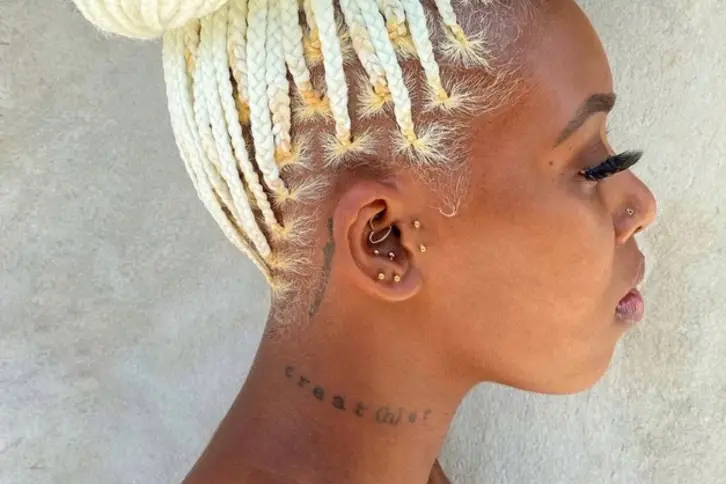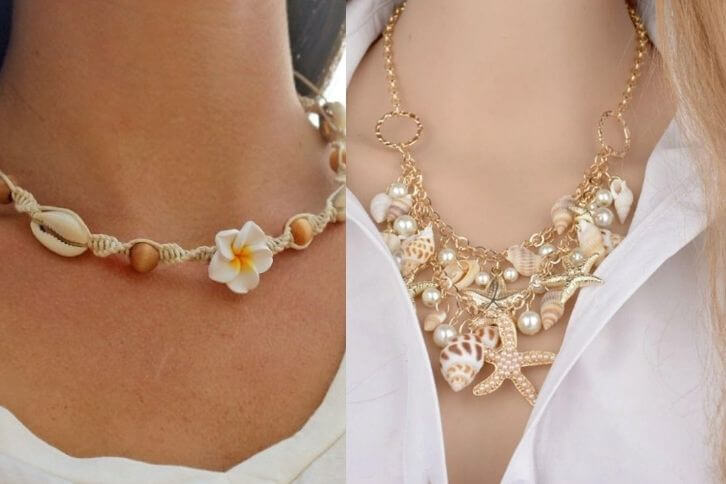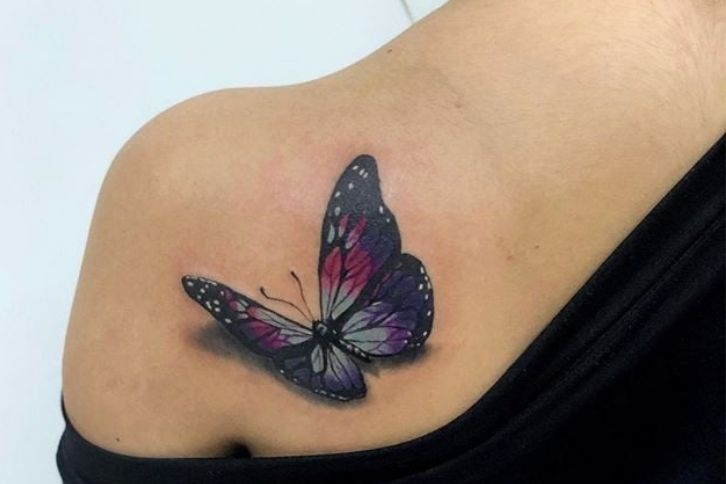In recent times, styling the ears has now become a form of art, where people use an assortment of pieces of jewelry to adorn their ears. The tragus piercing is one of such trends that hot girls and celebrities such as Rihanna and Beyonce, among others, have been sported rocking on and off the red carpet.
A tragus piercing is the perforation of the part of the ear called the tragus to insert jewelry and other ornaments. It is the small, pointed part of the ear, located at the front of the concha and projects backward. The tragus serves as a partial covering for the internal organs of the ears and is also the name of the hair that grows around the ear which is also a protective feature of the ears.
They are usually triangle-shaped and rounded, with varying sizes in different people. The piercing should rest on the small cartilage flap that partly covers the ear canal. This type of piercing looks cute on just about anyone. Before you go ahead with this piercing, continue reading this article for answers to some of your most urgent questions.
How painful is tragus piercing
The amount of pain an individual can bear is relative. The pain will vary depending on how sensitive your body is. In most cases, you will feel the pressure of the perforation process rather than full-blown pain.

Although it is a cartilage piercing like the conch and helix piercing and is expected to be painful, the tragus piercing may not be that painful if it is done by a professional. The cartilage is thicker than other parts of the ear, and precise pressure needs to be applied to get the needle to pass through.
The pain lasts for just a few seconds of the piercing process. On a pain scale of 1-10, it ranks a 6, because it feels like a stinging or pinching sensation.
Side effects
If proper care is not given to the ears after getting a piercing done, the piercing may lead to infections. For tragus piercings, there is the risk of infection due to the fact that there are limited white blood cells in cartilaginous parts of the ear to help fight off infections. There is also the risk of scarrings like keloid and hypertrophic scars where a large amount of tissue forms over the pierced spot.
You may notice redness and some form of irritation which should not be serious and should go down on its own. However, you should pay more attention to the pierced spot when you notice this because it could be the beginning of scarring or an infection. It is important you speak to a doctor or dermatologist if you notice that it is getting worse.
A different kind of side effect is getting an allergic reaction to the metal your jewelry of choice is made of. This can be avoided by discussing possible allergies to certain metals with the piercer before choosing the jewelry.
Aftercare
Clean the ears with a saline solution at least twice a day; this is the only time you should touch the piercing. Ensure that your soaps, lotion, and other skin products aren’t anywhere near your healing piercing.
One of the first precautions you should take is to avoid touching your pierced ears with dirty hands. Our hands contain many bacteria, and the spot of the piercing is like an open wound. Touching the piercing without washing and sanitizing your hands can be harmful.

Be careful of how you sleep afterward to avoid sleeping on the pierced spot. Some experts also advise changing your pillowcase often during the early stages. Keep external objects like hair, headphones, hats, and phones from the piercing.
Healing process of Tragus piercing
Everyone is different and so is the healing process; it varies between 3 months to 1 year. The way your body reacts to an injury should give you an idea as to how fast your healing process will be. Keep in mind that the tragus part of the ear is hard with limited blood flow so it may swell due to the impact of the piercing, but should go down as the piercing heals.
The healing process can be slowed down if you are not careful when changing the jewelry. In the first few months after you get the piercing done, it is best to avoid removing the jewelry.
Conclusion
There is inconclusive research showing that tragus piercings prevent migraines because of a nerve connected to them. The risk involved is minimal and can be avoided if proper care is taken.
The tragus piercing is a nice piercing to get because of the many choices of jewelry you can style them with. You also get customized jewelry that flatters the shape of your tragus, although studs are the preferred choice to start your tragus-piercing lifestyle. After your piercing is healed, you can go for barbells and hoops with unique shapes.
There is also the option of getting a surface tragus jewelry that looks like a piercing but is not because the ear is not punctured. They are done for the aesthetic feel without the commitment of getting a tragus piercing done.






















About Me
Fashion & Beauty Enthusiast
Hi, I'm Fanti. I'm a fashion, beauty, and lifestyle enthusiast, and the ultimate curves queen. Here, I share beauty, fashion, and lifestyle tips to teach, inspire, and give confidence to all women.